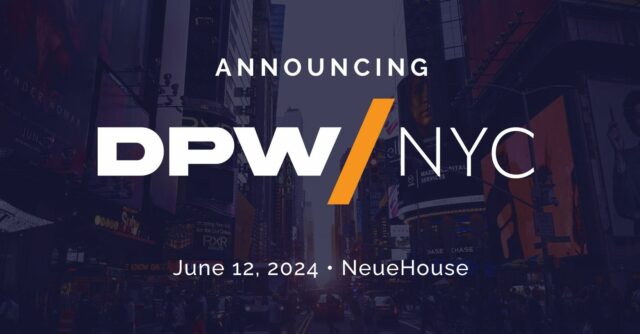In this article, Jon Hansen examines two opposing elements of the digital procurement paradox, including what organisations can do to begin to address the stalemate…
You are likely familiar with the phrase about irresistible force meeting an immovable object.
When it comes to procurement in the digital age, the same paradox applies to technological advancement and the need for greater security. In other words, technological advancement is the irresistible force that promises to transform procurement and business in general.
While there are several obstacles to the adoption of technologies such as the absence of “clean data” within an enterprise, security is the immovable object that executives cite as being their greatest concern.
The current lay of the land
In my paper Digital Transformation in Procurement, I referred to a McKinsey survey of 1,600 incumbent global companies. In the survey, 23% of the responding executives report having a digital strategy in place. Of those, just 2% have a strategy that includes their supply chain.
While the above numbers are in and of themselves noteworthy, in the context of the 2%, the results of a second survey are even more surprising. In that one, 70% of the respondents say that the supply chain is essential to delivering on the digital promise.
Think about this revelation for a moment. Respondents to a second survey state that the supply chain is essential to realising their company’s digital aspirations. With the first survey, only a small number of organisations have a strategy for digitising their supply chain.
The obvious question is, why?
The risk side of reward
Earlier this year, I had a chance to sit down and talk with the Director, Cyber Security for Cisco Michael Tryon. The focus of our conversation was on how organisations must have a “sure and safe pathway” towards achieving their digital objectives.
It was an interesting discussion on many levels. What stood out to me the most was Tryon’s reference to an article he had written in which he discusses a report from North Carolina State University.
According to Tryon, the findings from the University’s report show that the top concern of executives in the study was an inability to manage a new risk. The risk to which they are referring to is those associated with rapidly evolving technological advancement.
What is it about evolving technologies that have executives stuck in a holding pattern between the recognition of digital’s importance and the realisation of its promise?
The Amazonisation effect
From the standpoint of procurement, concerns with risk start and end with the Amazonisation of the supply chain, including increasing decentralisation.
One of the great things about Amazon is the ease at which someone can buy a product online with little to no difficulty. Purchasing is a simple exercise that is becoming progressively easier as the platform leverages RPA and AI to provide a seamless and intuitive experience for the buyer at home.
The Amazon experience at home raises the question; why can’t the same buying process exist in the work environment? The answer; decentralisation and independence and the potential risks associated with each.
Independence on the Edge
In another interview I did with the President of Hewlett-Packard Enterprises, there was the suggestion that the success of a digital strategy was dependent on going beyond the cloud to work at the edge.
HPE President Paula Hodgins referred to a study indicating that by 2020, each person globally will have up to 10 IoT devices at their disposal. We are no longer talking about a BYOD to work scenario. We are talking about individuals having incredible computing power at their fingertips all the time – buyers included.
According to Hodgins, this personal digital capability provides tremendous opportunities to maximise efficiency. By dealing with data (or requests) at the point of capture as opposed to pushing everything back to the cloud for processing saves time and money.
Like the Amazon experience, the consumerisation of the procurement process in business is a reality that all organisations need to recognise and embrace. Otherwise, they may not remain competitive in a demanding global economy.
But through the above decentralisation, the vulnerability of working on the edge, i.e., having many access or entry points to a company’s internal information through a myriad of personal IoT devices poses some risk. How do you control access? How do you protect against unauthorised breaches?
Based on the findings of the North Carolina State University report, the best way to address these as well as other concerns regarding securing the supply chain is to wait.
But is this the best option?
Getting to the reward of risk
Overcoming the above challenges comes down to two things.
The first is a willingness on the part of executive leadership to change their way of thinking about how procurement “works.” The second is the development of a viable security strategy.
A January 18th, 2019 Clint Boulton article in CIO magazine sums up the need for executives to align their thinking with the realities of an emerging digital world. In the article, Boulton writes; “your digital transformation is doomed unless you empower employees to succeed in the digital era.” He then goes on to say you must “craft a workplace that boosts engagement and agility.”
Engagement and agility come with decentralisation. It is providing all buyers (not just procurement people) with the ability to conduct transactional business at “the edge” leveraging new technologies. The new technologies to which I am referring include mobile devices, computers and personal analytics.
Once executive leadership not only recognises the tremendous competitive advantages of a digital procurement strategy but that they have to take action to make it a reality, they can then turn their focus to securing their supply chain.
A sound strategy
Securing the supply chain is critical. Especially in an age where with increasing frequency organisations are already sharing more and more information with third parties such as suppliers, business partners, and even customers.
Referring, once again to my talk with Michael Tryon, you need to respond to the “pervasive threats that are inherent in this exciting new world.” The best way to do that is through “a comprehensive cybersecurity strategy. One that focuses on prevention, detection, response and recovery.”
It is in this area that the CIO can take the lead. Within the framework of a collaborative environment that includes the key stakeholders, the CIO can create a strategy that adapts to the new technologies and the way they work.
For example, one organisation suggests using a distributed Security model in which they deploy and interconnect security controls at “points of digital engagement,” i.e., on “the edge.”
A final thought
When it comes to procurement working on the digital edge, it is important to recognise that all buyers do not have to be procurement professionals. Nor should they be.
In other words, people at a department level can leverage RPA and AI technology capabilities to do direct purchasing. Procurement professionals can then focus on the more strategic and complex supply chain acquisitions.
From a procurement standpoint, the effective utilisation of resources both within and external to the procurement department is how organisations will realise the greatest return on their digital strategy.











